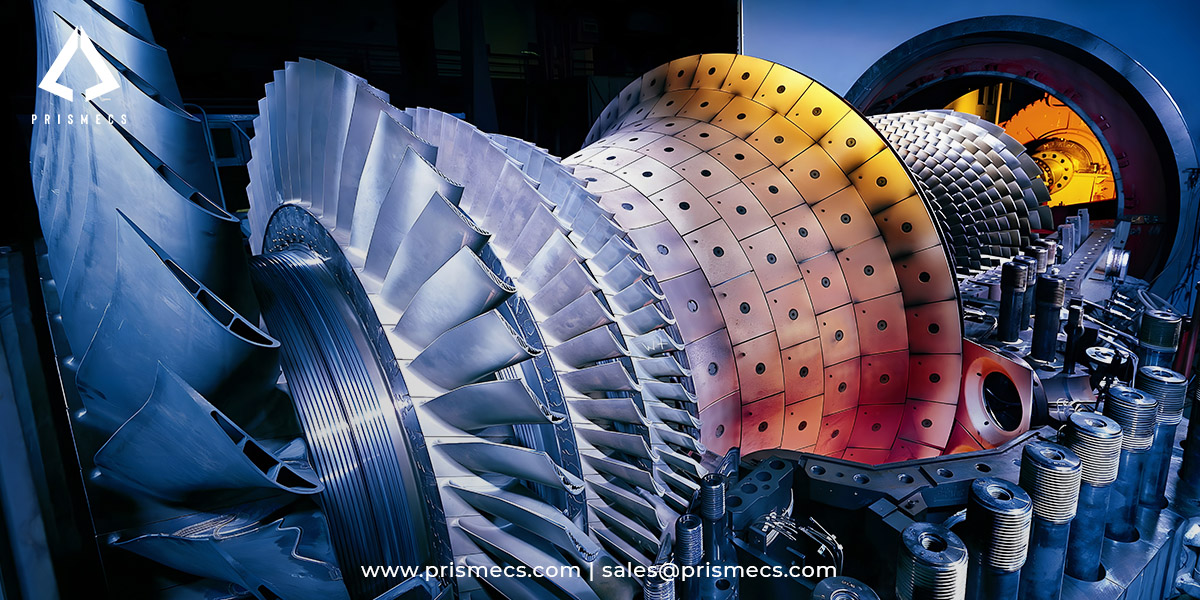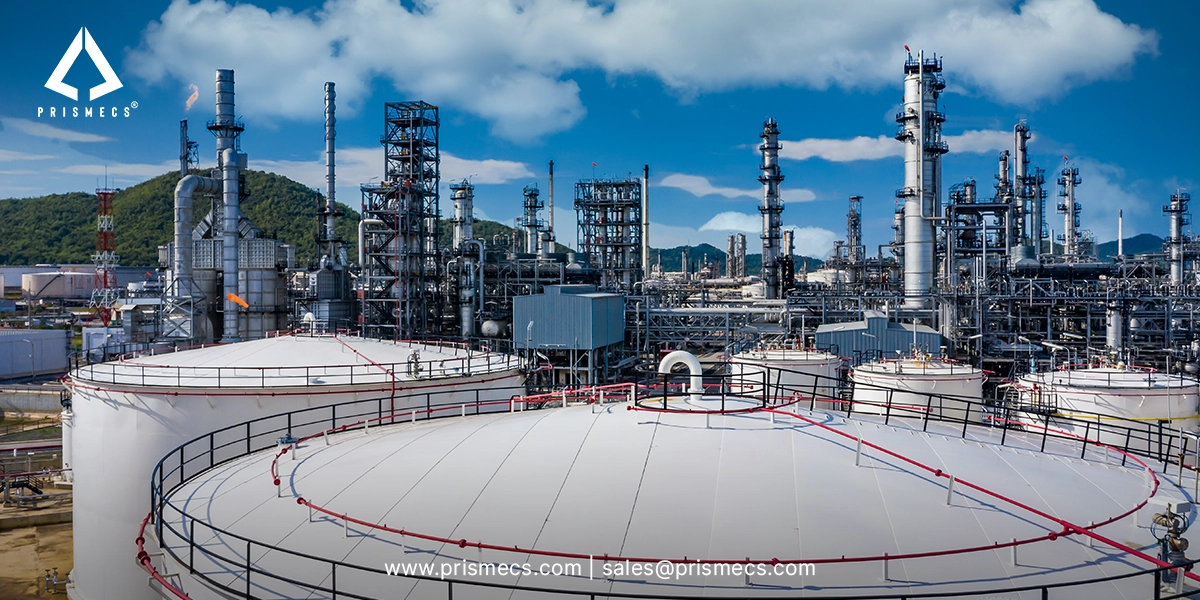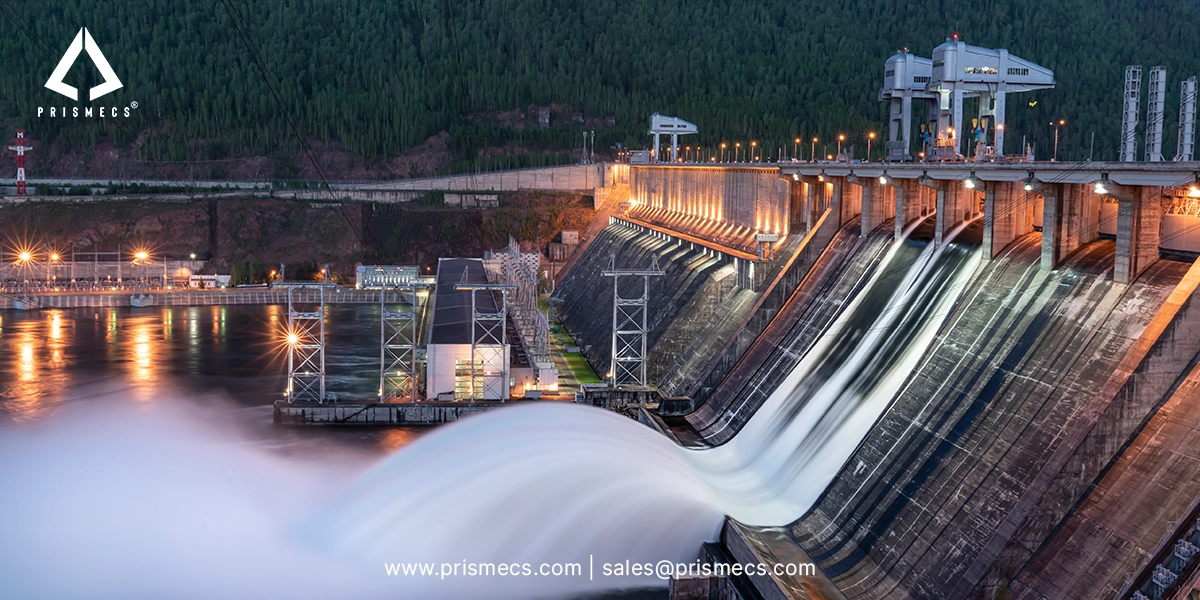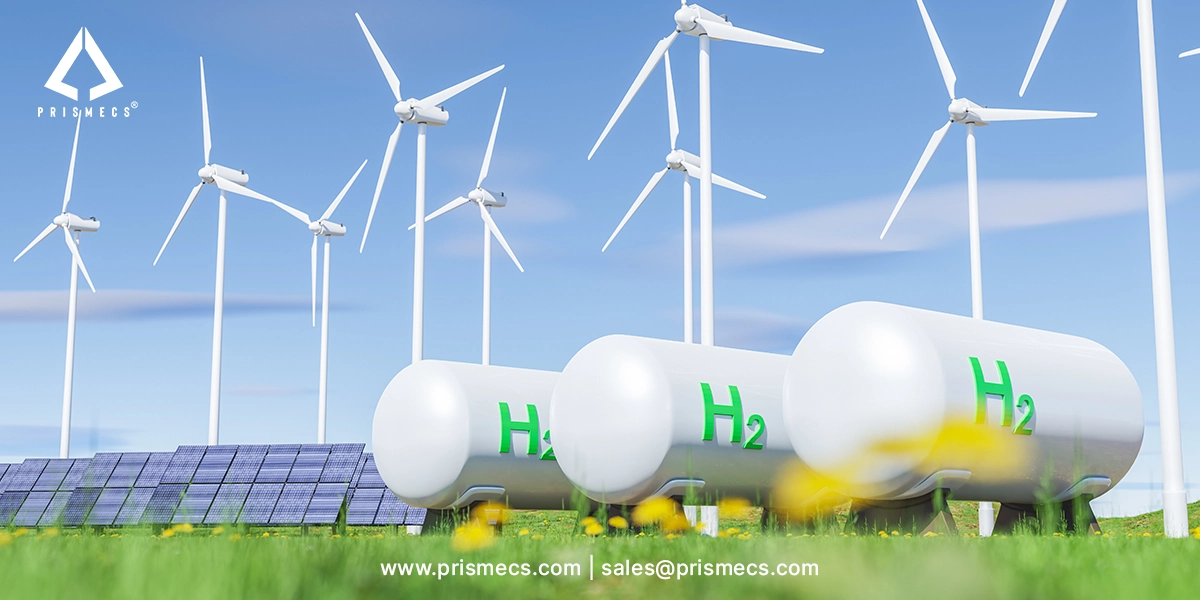
Gas turbine engines have changed the way we produce electricity, offering high-efficiency power generation through advanced combustion technology. Since their first commercial use in 1939, these engines have become essential in every power plant worldwide. They generate high-speed, reliable energy from a variety of fuels.
In this comprehensive guide, we will explore how a gas turbine operates. We will compare it to reciprocating engines. We will highlight its components, performance, and operational advantages.
What Is a Gas Turbine Engine?
A gas turbine engine is a combustion engine. It uses air and fuel to create high-temperature gases. These gases are high-pressure and spin a turbine to produce mechanical energy. This energy helps produce electricity or powers other machinery. Unlike engines that operate in cycles, a turbine engine runs on continuous combustion. It can use various fuels, including natural gas, diesel, and synthetic alternatives.
How Does a Gas Turbine Engine Work?
A typical turbine engine consists of three key parts:
Compressor
The compressor draws in large volumes of air and compresses it into compressed air. This air acts as the base for combustion and energy generation. In engineering designs, advanced control systems regulate airflow and maintain efficiency at higher temperature ranges. Similar to a steam engine, the compressor converts kinetic energy into thermal energy. This energy moves to the next stage.
Combustion Chamber
Inside the chamber, someone injects fossil fuel, such as natural gas, into compressed air. They ignite this mixture to produce exhaust gas at an extremely high temperature. These gases serve as a power source, flowing into the turbine. In advanced systems, heat exchanger technology boosts thermal efficiency by recycling heat. Heat exchangers work like those in nuclear reactors or combined cycle power plants.
Turbine
The turbine rapidly expands the hot gases, spinning blades at high speed. This rotation helps drive the compressor and powers an electric generator to create electricity. Depending on the type of internal design, engineers may add an electric motor for hybrid systems. The process follows the Brayton Cycle, where efficiency depends on pressure ratio and firing temperature. Engineers include monitoring to keep operations stable.
Read More: Gas Turbine Power Station for Industries
How Does a Combustion Engine Work?
A typical internal combustion engine has three parts:
Intake & Compression
Here, an air-fuel mix enters the cylinder. The piston compresses it into a smaller volume. Unlike a gas turbine engine, a combustion engine operates in cycles, not continuous flow. Modern control systems adjust fuel delivery for maximum power output while reducing waste. This differs from older steam engine setups, but it still converts thermal energy into usable power.
Combustion Chamber
A spark plug ignites the compressed mix in gasoline engines, or heat does so in diesel engines. This blast releases thermal energy and generates exhaust gas. The pressure becomes the propulsion system, much like jets or gas turbine engines. Engineers may add heat exchanger systems to cut emissions.
Power Stroke & Exhaust
The blast pushes the piston down, creating mechanical energy that rotates the crankshaft. This energy powers vehicles, machines, or an electric generator. Later, exhaust gases exit the cylinder for the cycle to repeat. You can combine a jet engine or propulsion system with a combustion engine in hybrid systems. The type of internal design decides how the electric motor and engine run together. Engineers design these for maximum power output while ensuring durability.
Aero-Derivative vs. Heavy-Duty Gas Turbines
Two main types of turbine engines exist:
Heavy Duty Gas Turbines | Aero-Derivative Gas Turbines |
Designed for stationary applications
| Derived from aircraft engines. Compact, lightweight, and portable
|
Pressure ratios up to 18:1
| Higher pressure ratios (up to 30:1)
|
Known for long operational life and robust construction
| Better thermal efficiency, lower emissions, and quicker startups
|
Both are used in power generation but differ in design and operational flexibility.
Thermal Efficiency & Combined Cycle Operations
While a simple cycle gas turbine engine has an average efficiency of 30-40%, combined cycle systems improve this dramatically.
How?
Combined cycle power plants capture exhaust gas from the gas turbine, usually around 600°C. They use this heat to power a steam engine. These plants achieve thermal efficiency of 55–60%.
However, operating in combined mode requires:
- Longer startup times
- Complex purging procedures
- Gradual ramp-up to full power output
Gas Turbines vs. Combustion Engines: A Technical Comparison
Here’s how a gas turbine operates compared to a combustion engine across several operational metrics:
Specifications | Gas Turbine | Combustion Engine |
Start-up Time | Gas turbines (combined cycle) may take up to 20 mins
| Combustion engines reach full load in <10 mins
|
Load Flexibility | They are less efficient for short-duration load balancing | They can handle pulse loads better
|
Modularity | They are less adaptable for small-scale, distributed energy setups.
| Engine-based systems offer superior scalability. |
Ambient Temperature Type | They can suffer performance drops in hot/humid environments
| These engines maintain steadier output
|
Ramp Speed | They can ramp up/down slower than combustion engines
| Fast ramping is crucial for grid flexibility
|
Water Consumption | They often require water for cooling/emissions control
| Combustion engines generally have lower water usage
|
Fuel Flexibility | These turbines typically have reduced efficiency when operating on fuel oils
| They can switch between gaseous and liquid fuels mid-operation
|
Key Benefits of Gas Turbine Engines
- High power output in a compact design
- Ability to produce electricity efficiently in combined cycle setups
- Reliable operation with fewer moving parts compared to reciprocating engines
- Operates at high pressure and higher temperature with reduced emissions
- Can be integrated with steam engine systems for enhanced energy recovery
Gas Turbine Applications & Industry Use
Gas turbine operates widely in:
- Power plant (simple and combined cycle)
- Industrial manufacturing
- Aviation (jet engine)
- Oil and fossil fuel facilities
- Marine propulsion system
They’re ideal for situations requiring continuous, high-speed energy generation and a dependable power source.
Need Expert Gas Turbine Solutions?
At Prismecs, we offer cutting-edge services for gas turbine engines. We deliver equipment and control systems tailored to meet your industry's specific needs. Whether you're looking for parts, complete systems, or maintenance support, our expert team is here to help.
- Comprehensivegas turbine parts & systems
- Maintenance & repair solutions
- Custom solutions for power and industrial applications
Contact us today to learn how we can optimize your mechanical energy systems. To avail of our services, please call us at +1 (888) 774-7632 or email us at sales@prismecs.com. Visit our website or reach out to our Contact Us page to get started!
Tags: Gas Turbine Engine Reciprocating Engines High Speed Internal Combustion Engine Exhaust Gas Natural Gas Propulsion System Turbine Engine Gas Turbine Operates Power Plant Jets Engine
recent posts

Petrochemicals
6 minutes read
Petrochemical EPC Services for Complex Plant Projects
Petrochemical EPC services are designed to manage complex plant projects, brownfield integration, strict regulations, and tight schedules.

Renewables
5 minutes read
How Renewable Energy Systems Work Efficiently
Discover how renewable energy systems work efficiently to provide affordable, zero carbon energy, overcome storage challenges, and power for a sustain...

I and C Services
7 minutes read
Expert Commissioning Services for Safe, Efficient Operations
Learn how expert commissioning services support safe, efficient, and reliable energy operations across complex industrial and power systems.

Green Hydrogen
7 minutes read
Green Hydrogen Plant Technology Guide
Discover how a green hydrogen plant works, its key technologies, and its role in clean energy. Explore solutions for scalable, carbon-free hydrogen pr...